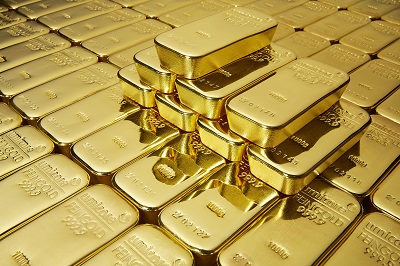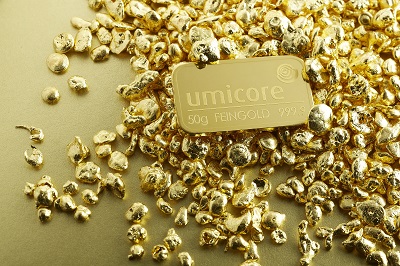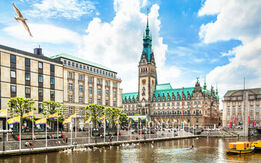Bretton Woods – gold-based world monetary system
Gold facts & figures Arnulf Hinkel, financial journalist – 11.07.2024

Already valued as a universal means of payment in ancient times, gold was increasingly used to stabilise national currencies as economic relations expanded internationally.
Introduced in 1880, the gold standard was an agreement among industrial nations on a global financial order, to ensure stable exchange rates and balanced foreign trade across the participating states’ domestic markets and internationally.
A fixed gold price was set for each national currency, as well as a guarantee that each participant could exchange money for gold at any time at its central bank. This, in turn, meant that the parities of different currencies were also fixed – apart from smaller, nationally determined premiums or discounts.
Departure from gold standard and British dominance....
This not only meant that a country’s circulated currency was tied to its gold reserves; it also forced the participating countries to pursue a financial policy that focused on balancing payments with other members, as trade deficits had to be offset with gold.
The construct ran smoothly only as long as none of the participating countries ran into liquidity shortage, because every newly printed banknote had to be backed by gold. With the enormous costs of financing the war and the impossibility of expanding the gold reserves accordingly, the beginning of the WWI heralded the end of the gold standard.
In the mid-1920s, a number of states – especially Great Britain, the world’s key currency before the war being the pound sterling – tried to uphold the gold standard. However, by the time the world economic crisis hit, even its staunchest defenders were forced to admit defeat.
At the same time, the efforts of many countries to boost their economies by devaluing their own currencies led to dramatic exchange rate fluctuations. The world economy suffered from the currency devaluation war, which, took on bizarre turns. One example: the “Butter War” fought between Denmark and New Zealand in the early 1930s. The world was in urgent need of a new, stable global currency.
... towards Bretton Woods and the US dollar as the new reserve currency

With the onset of the WWII, economists in both Britain and the US worked feverishly on a new world monetary architecture.
While British economist John Maynard Keynes, who described the gold standard as a “barbaric relic”, advocated an independent international currency as a reserve currency in a fixed-rate system, his US colleague Harry Dexter White also supported the idea a fixed-rate system, but with the US dollar as an anchor currency, which in turn was to be backed by gold – but much more flexibly than had been the case with the gold standard.
Thanks to the change in the balance of power on the international markets in favour of the US, White’s idea prevailed, with the US dollar replacing the pound sterling as the reserve currency. The new world monetary system was supposed to support the smooth running of world trade, free of trade barriers and with narrow fluctuation margins of exchange rates, which would remain stable even in crisis situations.
The fact that the conference was held in the small town of Bretton Woods, located in the very north of the US, had a strong symbolic power. It showed the new US economic leadership role across the world’s markets. More than 700 delegates from 44 nations travelled to the remote mountain village, previously known primarily as a holiday resort for skiing enthusiasts and hikers. For 23 days under US leadership, the delegates fine-tuned a new world currency architecture that would make the export and import business more predictable for all participating nations and limit exchange rate fluctuations. They quickly realised the fact that these goals were unachievable without gold as a stabilising factor.
Core components of the Bretton Woods system
The Bretton Woods Agreement, initially signed by 44 states (the Federal Republic of Germany joined in 1949, the year it was founded) comprised the following rules:
- The price of gold per ounce was fixed at US$35 and the US undertook to buy and sell dollars at this price at any time.
- All parities of the currencies of the other participants in the agreement were fixed against the US, with the respective central banks undertaking to stabilise their currencies within one per cent of the fixed parity.
- In contrast to the gold standard, however, these parities modifiable in the event of fundamental problems with regard to balance of payments of individual countries by revaluing or devaluing their respective currencies.
- In order to cope with temporary balance of payments fluctuations, an International Monetary Fund (IMF) was established, with the purpose and ability to provide loans to affected countries.
Newfound stability – at the expense of member states’ flexibility
From the start of the new world monetary system, the participating countries were dependent on the national fiscal policy of the US and had to manage their own monetary policy very restrictively. This initially did not pose a problem. On the contrary, the low volatility of exchange rates favoured economic recovery in the member countries and reduced the number of banking crises.
However, as the balance of payments deficit of the US rose steadily from the late 1950s onwards, the share of the US economy in global production dropped to 25 per cent by the end of the 1960s and its share in world trade shrank to around 10 per cent. The new world economic order also came into perspective. Export-oriented economic nations like Japan and Germany in particular were increasingly reluctant to bow to the restrictions of the Bretton Woods system.
The fixing of the gold price at 35 US$ per ounce proved to be another problem: on the free gold market, deviating, significantly higher prices were determined at the London Gold Fixing, which weakened confidence in the stability of the US dollar as the leading currency.
1973: The end of the Bretton Woods system

The backing of the US dollar with gold initially proved to be a stabilising element of the new world monetary architecture, and the low volatility of exchange rates, a phase of economic upswing and significantly fewer banking crises confirmed the new world monetary system until the 1960s.
Lyndon B. Johnson’s expansionary monetary policy to finance the Vietnam War and his “Great Society” social programme quickly brought the Bretton Woods system to its limits due to the dependence of the participating states on US fiscal policy. Member countries, above all Germany and Japan with their flourishing economies, refused to bow to the pressure of also implementing an expansionary monetary policy, weakening the reserve currency and the US as an economic power.
When Johnson’s successor Richard Nixon suspended the convertibility of the dollar into gold in 1971 to support the US currency and fight inflation (“Nixon shock”), this meant a decisive weakening of the fixed exchange rate system. With the beginning of the oil crisis in 1973, it also entailed the end of Bretton Woods.
However, one important element of the Bretton Woods system has remained in place: the IMF, which still fulfils the same main task as it did in 1944 when it was founded. What has changed, however, is the number of member states, which has risen to 189 from an initial 44.
Would a gold standard comeback be possible?

A number of economists remain convinced that Keynes was on the right track when, instead of a world monetary architecture based on the gold standard, he proposed a system of exchange rates fixed within predetermined margins, which would be based on an artificial global currency.
In this case, an expansionary monetary policy would have been more feasible than backing a reserve currency with the rare and finite commodity and asset gold. Today, the reintroduction of a global gold standard would be unthinkable, because the money supply has been expanding almost continuously since the end of the Bretton Woods system. A gold backing would therefore no longer be possible in purely quantitative terms.
More specifically, this can be illustrated via the national debt of almost any country. Germany’s debt burden, for example, more than doubled from 1970 to 1975 to €130 billion. Since then, the national debt has risen steadily and stood at 2.33 trillion at the end of 2020. An even more extreme case, the US has seen the national debt increase from US$5.6 trillion to 26.6 trillion within the last 20 years alone, an almost fivefold increase until the end of 2020. According to a Statista forecast, is set to rise further to over US$ 36 trillion by 2026.
Inflation protection and safe haven: gold demand remains unbroken
One might think that with the end of the Bretton Woods system, the importance of gold as an asset would have declined rapidly. The opposite is true: central banks around the world are stockpiling just as much gold today as they did in the days of the gold standard, even though the gold reserves no longer serve to back a reserve currency.
Some countries, above all China and Russia, have in fact massively expanded their gold reserves in recent decades in order to reduce their dependence on the US dollar.
Another reason for the precious metal’s exceeding popularity has its origins in the already mentioned enormous expansion of national debt, which is so high in many economies that these states will never be able to compensate. In view of the prevailing low or zero interest rate policy of most nations, this means that central banks can hardly respond to inflation with an adequate interest rate hike without seriously endangering the economic performance of a country or region.
As a result, gold is now regarded as an excellent inflation hedge immune to any key interest rate hike, a natural “enemy” of the gold price. This and the proven crisis resistance of the precious metal have established gold as a fixed component of both institutional and private investors’ portfolios. And studies have shown that the risk of loss in a portfolio diversified with gold is lower than for a pure stock-bond portfolio.
Xetra-Gold Hotline

Do you have questions? We have the answers. Contact us here: 9 a.m.–6 p.m. CET
xetra-gold(at)deutsche-boerse.com
For press inquiries: media-relations(at)deutsche-boerse.com




